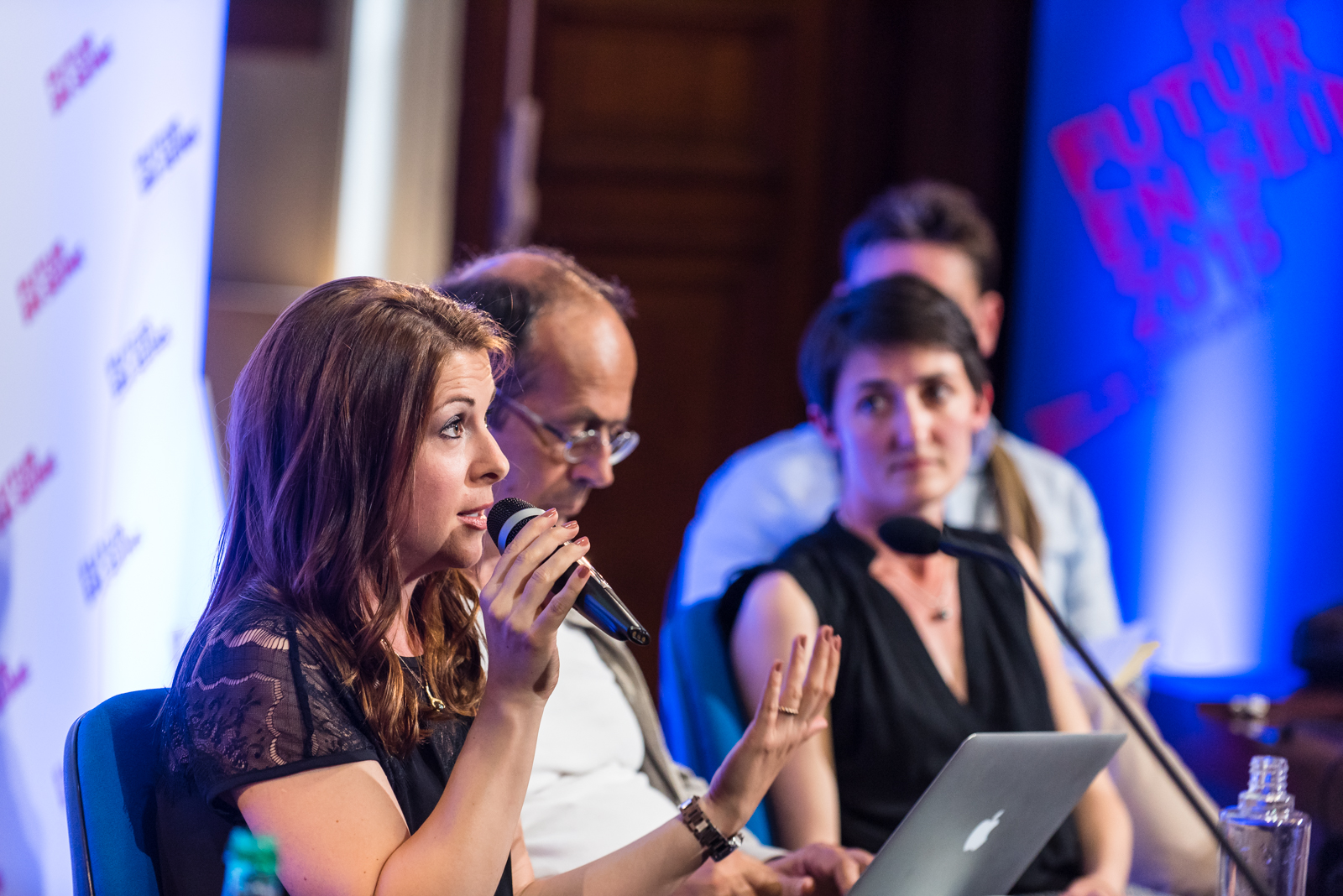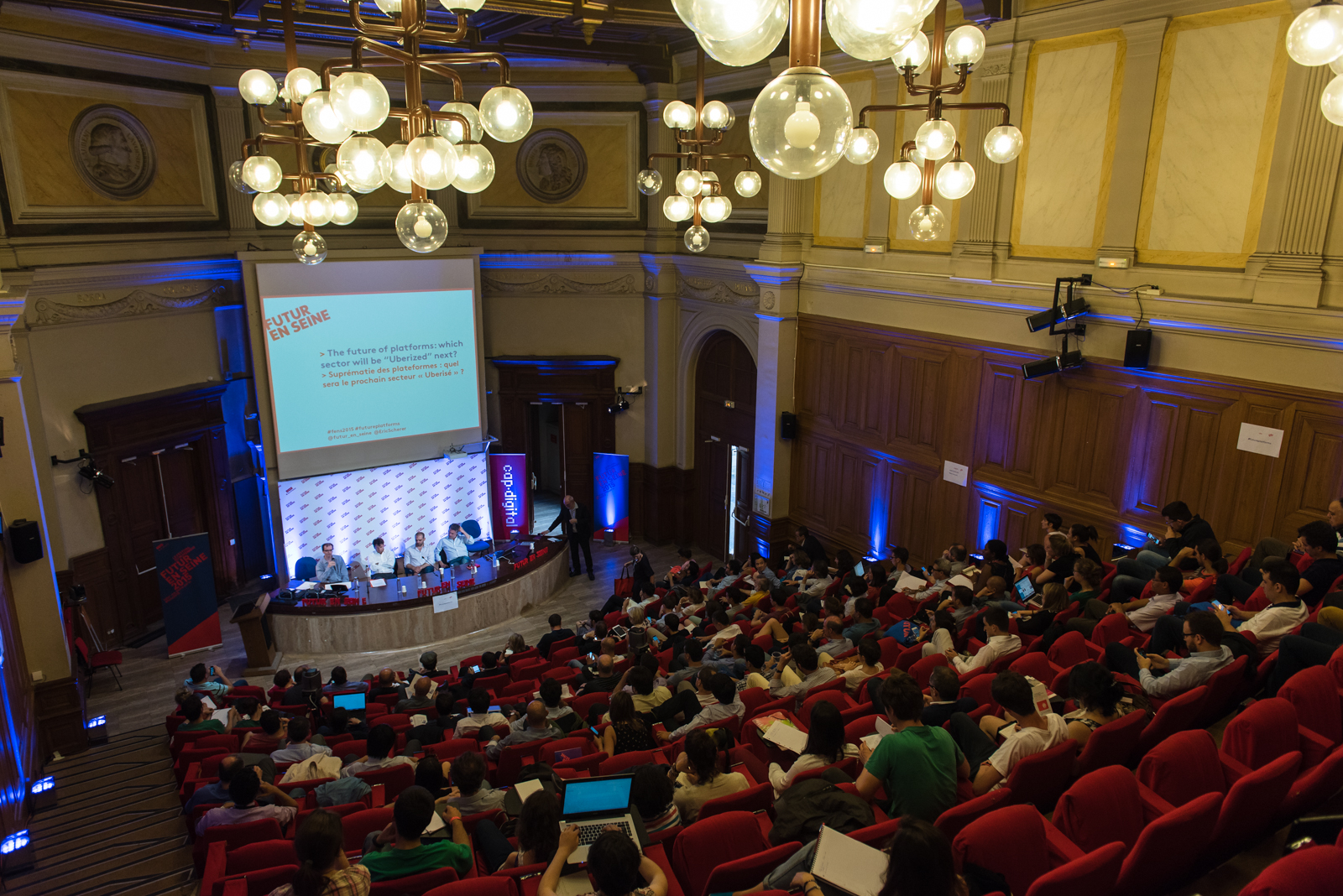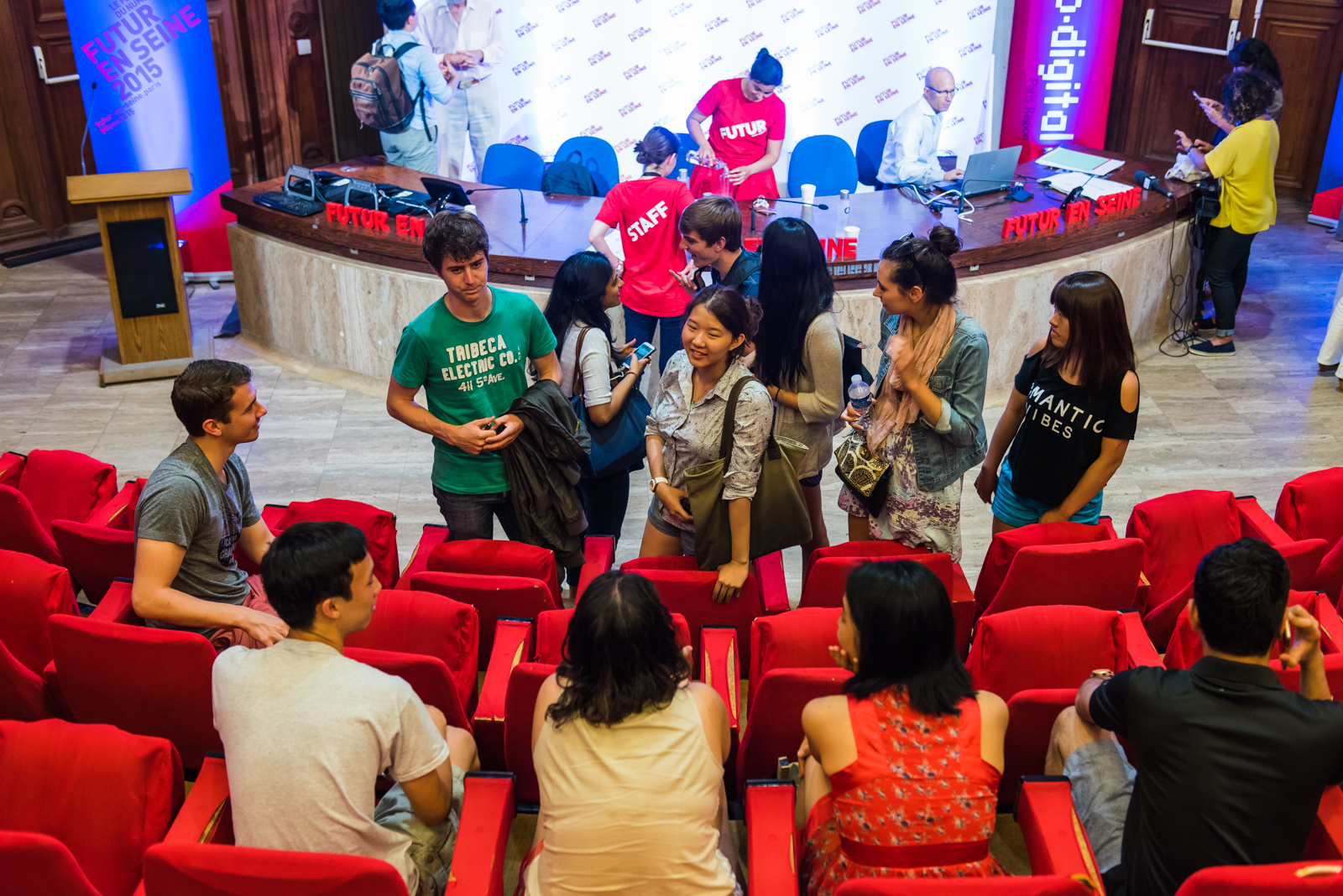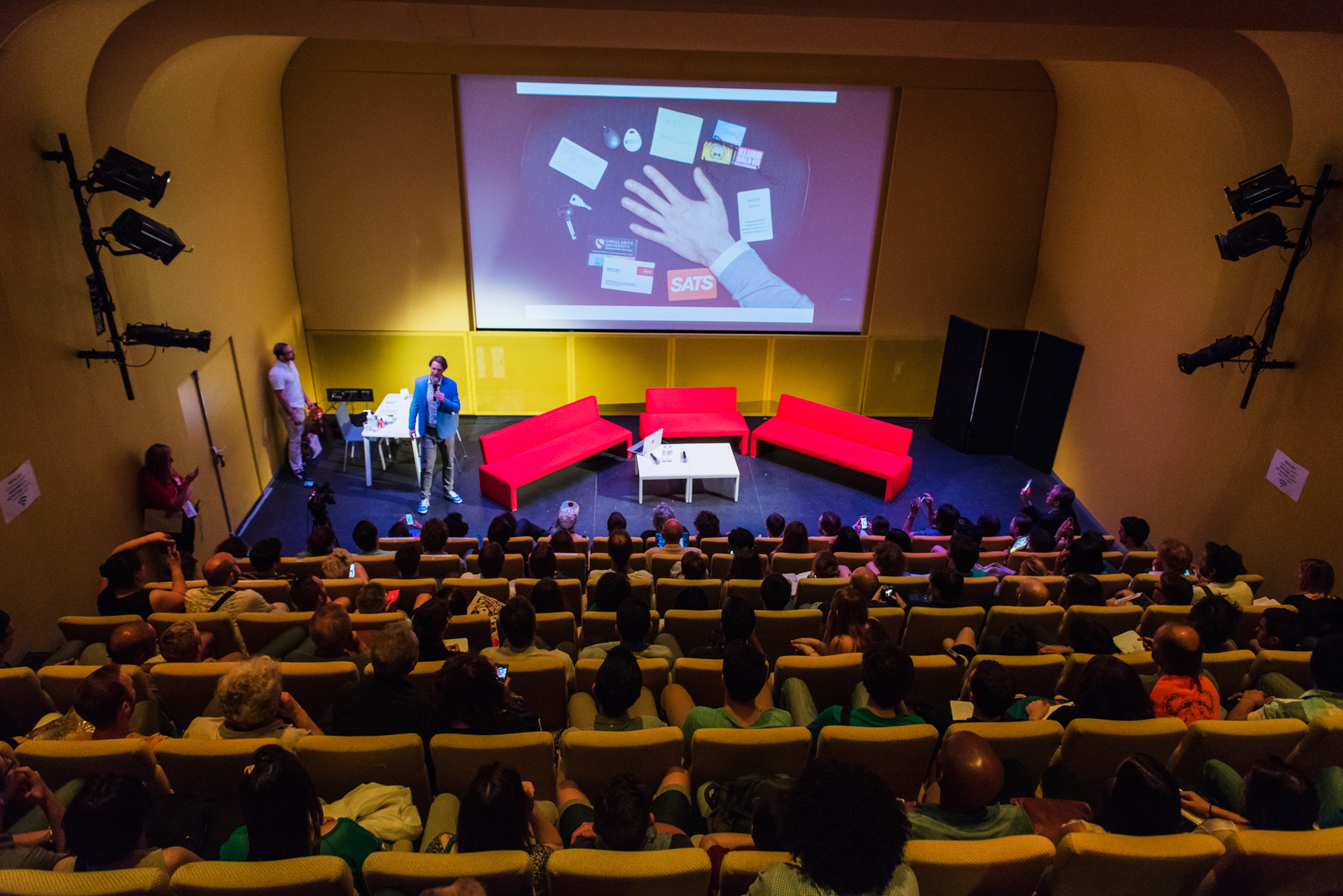The prestigious American university of Harvard developed a Summer School program, in collaboration withParis Centre de Recherches Interdisciplinaires. This course is an interdisciplinary exploration of how the principles of biological evolution can be applied to the ever-growing challenges facing large cities, such as Paris, in the twenty-first century.
In this context, students attended Futur en Seine’s conferences cycle “ Human and Technology” lead by Eric Scherer, curator of this edition. Discover students blog posts questioning themselves on the way human and technology interact with one another.
“Robots and Artificial Intelligence will replace millions of jobs: how digital is reshuffling the cards of work?”

Kairn
The main concept I drew from futur en seine was the idea of inclusion. When envisioning a smart city it is easy to get hung on designing for the privileged. What had not occurred to me until the woman from Mexico City spoke was that a smart city needs to adhere to not only to the general population but to those who are handicapped, elderly, and/or technically challenged. This idea adds another layer to the design process and frankly presents another challenge when one attempts to dream up the next technology or policy for tomorrow’s “smart cities”. Another less impactful yet intriguing concept that was presented is the idea of robotics. Not simple robots, but robotics in the sense of replacing human purpose and labor. When I sat through this conference I imagined a world in which industry was almost completely performed by robots. Given that this would replace a countless number of jobs, where would this advancement leave our blue collar workers? The entire concept of a smart city relies on everyone working together and contributing to the greater good of the community. I think it is quite interesting and imperative to think about other ways to use the tools humans possess.
“The future of platforms: which sector will be “Uberized” next?”

Alex Kaufman, Cecile Crapart & Olivia Chen
The launch and spread of Uber, an application for iOS and Android devices that allows users to call a private driver, search and input a destination, track their ride, split the fare with others, and pay in advance by connecting their credit card information, rocked the world of public transportation on a global scale. The most revolutionary part of the Uber application isn’t the actual service of getting a car and driver on demand, but the concept of creating an easy online marketplace where buyers and sellers can meet seamlessly in realtime can be extrapolated and applied to nearly every sector in the future. Also, the ability of Uber and other platforms to leverage realtime pricing enables a full reflection of supply and demand at any moment instantaneously. Furthermore the increased presence of vertical marketplaces over horizontal marketplaces will benefit both consumers and service providers.
New labor marketplaces enhance accessibility to new consumers and workers. Consumers have access to services that would otherwise be too expensive or inconvenient to obtain while the service providers can facilitate market entries seamlessly through a precreated business model that can hire anyone meeting the minimum prerequisites. Expect the Uber model to expand to nearly all sectors as we modernize our workplace market.
“The city, a laboratory for the low carbon future?”

Anne-Pia Marty, Layla Stahr & Michael Wong
“The city as a lab for low carbon future” was also of particular interest given our focus on biology, as the discussion started off with a comparative presentation of cities and animal metabolism. From a metabolic standpoint, mammals are scaled versions of one another, as metabolism has a direct relationship with body mass (a 0.75 ratio of body mass per massic energy consumption). The panel explored whether these scale principles likewise apply to cities. Geoffrey West’s research on city metabolism showed a universality of human interactions such that the prices, wages, number of patents created (indicator of creativity), crime, buildings, and more increase as the city increases by a constant ratio of 15%. However, they also highlighted divergence between living systems and cities. Indeed, if in mammals, the speed decreases relative to size, the opposite occurs in cities, where the speed of life increases with the city’s size. In addition, living organisms typically grow up to a critical point where they either stop growing or divide, but cities lack this capacity, which becomes worrisome when we consider the fast rate of city growth, with the equivalent area of NYC erected every 6 weeks as urban area in the world. This global urbanization rate applies a fantastic stress on our resources, thus threatening our socio-economic activity and sustainability as a whole. Given that our proposal focuses on bettering some of the most high-density areas in Paris (the metro stations and cars), it is important that we consider this growth when outlining our proposal. For instance, will our subway and community art exhibits successfully display the city’s growing creativity, or are larger venues and presentations necessary? Thus, we hope to incorporate the idea of growth into our proposal.
Clara
Like Geoffrey West, researcher from the Santa Fe Institute, who started his speech with the Shakespearean quote “What is the city but the people?”, all the speakers of the “City as a laboratory for a low carbon future” conference discussed the key role of citizens and communities in this future. The speakers discussed how the city and its innovative communities were the solution to climate change even though the city is often seen as a strong cause of this phenomenon. West emphasized the importance of resilience and evolvability in urban social networks like in biological networks as one part of the solution. Our group is addressing this core issue of creating more interaction and stronger communities by creating a framework for community space exchanges. Valérie Peugeot from Orange Labs explained that cities dealing best with climate change were often sharing cities, with citizens sharing idle infrastructure such as cars, spaces or gardens. She also explained that to have a more connected and resilient city, citizens needed to take a bigger part. Giving new uses to underutilized spaces in the city follows the idea of a sharing city, which creates a more efficient use of infrastructure as well as stronger community ties. People will not just exchange space, they will also discover new areas and people in their neighborhood, fostering compassion and mutual assistance, the pillars of a resilient community. Our group is focusing on a smaller scale than the entire City of Paris since neighborhoods have more in common.
Implant Party

Ju Hyun Lee, Christopher Li, Nicolas Senecaut
One of the clearest examples of a digital technology implemented for the purpose of advancing daily life was the implant party on Saturday evening. Such technologies attempt to replicate the “natural” level of technological integration, such that it physically becomes part of its users. But it is, however, very controversial. As the inventor of the implants pointed out, implants can replace credit cards, keys, and numerical data that we generate, thus simplifying everyday life. Yet what seems ostensibly like a fantastic idea can in reality raise hidden questions and controversies. During the discussions about implants, an audience member raised the question of whether security features were in place to safeguard against the theft of personal data, but the question was largely circumvented with an equivocation that these devices contained no sensitive personal data. Later, however, they ironically remarked that GPS tracking might soon be installed. What is important to understand from the session is that our desire for technological improvements can often hinder our objective evaluation of the very technologies. In developing our proposals, therefore, we can draw from lessons learned from the Implant party and ensure that any proposed plan will seek to create advancements that integrate naturally into society and that are not biased by preconceived objectives.